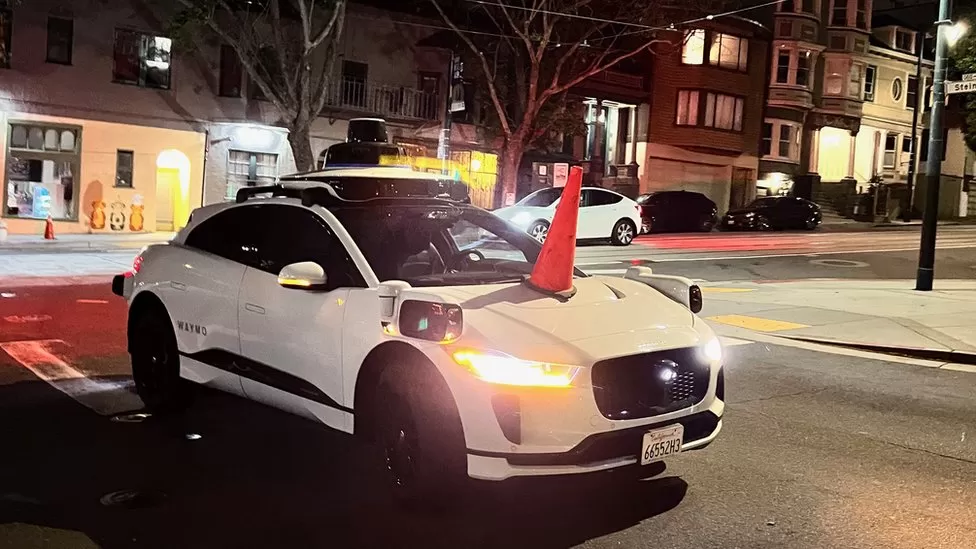How robotaxis are dividing San Francisco

There is no driver in the cab. Before whisking me off into the night, it stops in front of me and invites me to unlock its door with my phone.
As I am about to enter, a passerby approaches.
“They’re unsafe,” he says. A robotaxi nearly ran over someone, and he warns me to be careful.
A faction in San Francisco opposes robotaxis and believes the city has agreed to a dangerous experiment that is putting lives at risk.
Some have even gone further. During the summer, a campaign group has started putting cones on cars’ bonnets to disable them.
It describes what it does as “coning” and some of its videos have gone viral. For now, city officials will allow them to operate on their streets. A 24-hour cab service for Waymo and Cruise was approved by the California Public Utilities Commission (CPUC) on 10 August 2023. Before, they could only offer paid rides at night.
A conveyor belt of people voicing their hopes and concerns preceded that vote.
“If self-driving taxis are allowed to expand, it’s going to take jobs away from families. I’m a single mom,” said Rosine, an Uber driver in the city.
Garbage disposal truck representatives said the cars often broke down and blocked their vehicles. The San Francisco fire department has criticized the cars for the same reason, saying they have been obstructed 55 times this year.
The technology simply hasn’t proven itself safe yet, according to others. A San Francisco cab driver, Matthew Sutter, said: “I’m all about technology, but it’s not ready… this is dangerous.”
Others representing physically disabled people asked how they could get into cabs without assistance from drivers. Paratransit Coordinating Council member Mara Math said robotaxis would “leave disabled San Franciscans out in the cold”.
Then there were those who supported it. He added that he had worked on many serious injuries involving human drivers – and that robotaxis appear to be safer than angry or distracted drivers. “I have seen how these cars behave, and I trust them much more than angry or distracted drivers.”
Blind Jessie Wolinsky said Uber and Lyft drivers harassed her. Using Waymo cars had “provided me with a level of safety I had never experienced before”.
A mother also said taxi drivers rejected her when they saw her children’s car seats – something a driverless car would never do.
Both sides of the argument have been presented to me. Over the last few months, I have used Cruise’s robotaxis several times without any accidents. I have also been in a robotaxi that broke down in the middle of the street.
It simply stopped when it encountered a tight right-hand turn. The cars behind me beeped and then mounted the kerb to get around us. Their frustration was understandable.
There was an accident involving a cruise taxi and a fire engine eight days after the vote to expand the use of robotaxis.
